🟧 Fake Turf Fight Flares Up // Ocean Avenue Intrigue
Plus: Mayor Daniel Lurie and Supervisor Myrna Melgar take resident questions.
The 136-year-old astronomy education nonprofit organization is downsizing after nearly 40 years in the neighborhood.

Inglesiders may have noticed a for-sale sign on a prominent corner of Ocean Avenue. The Astronomical Society of the Pacific is seeking a buyer for its two-story office building after nearly 40 years in the neighborhood.
Listed for sale in early August for just over $3 million, the building, branded with the nonprofit’s bright blue logo of the Roman god Mercury, holds the history of the society’s many eras. After all, a 136-year-old society is no stranger to change.
The Ingleside Light got a peek inside the building and found space-age ephemera, old star maps and segments of model solar systems. Much of its memorabilia must be left behind, as the staff will likely relocate to a smaller office.
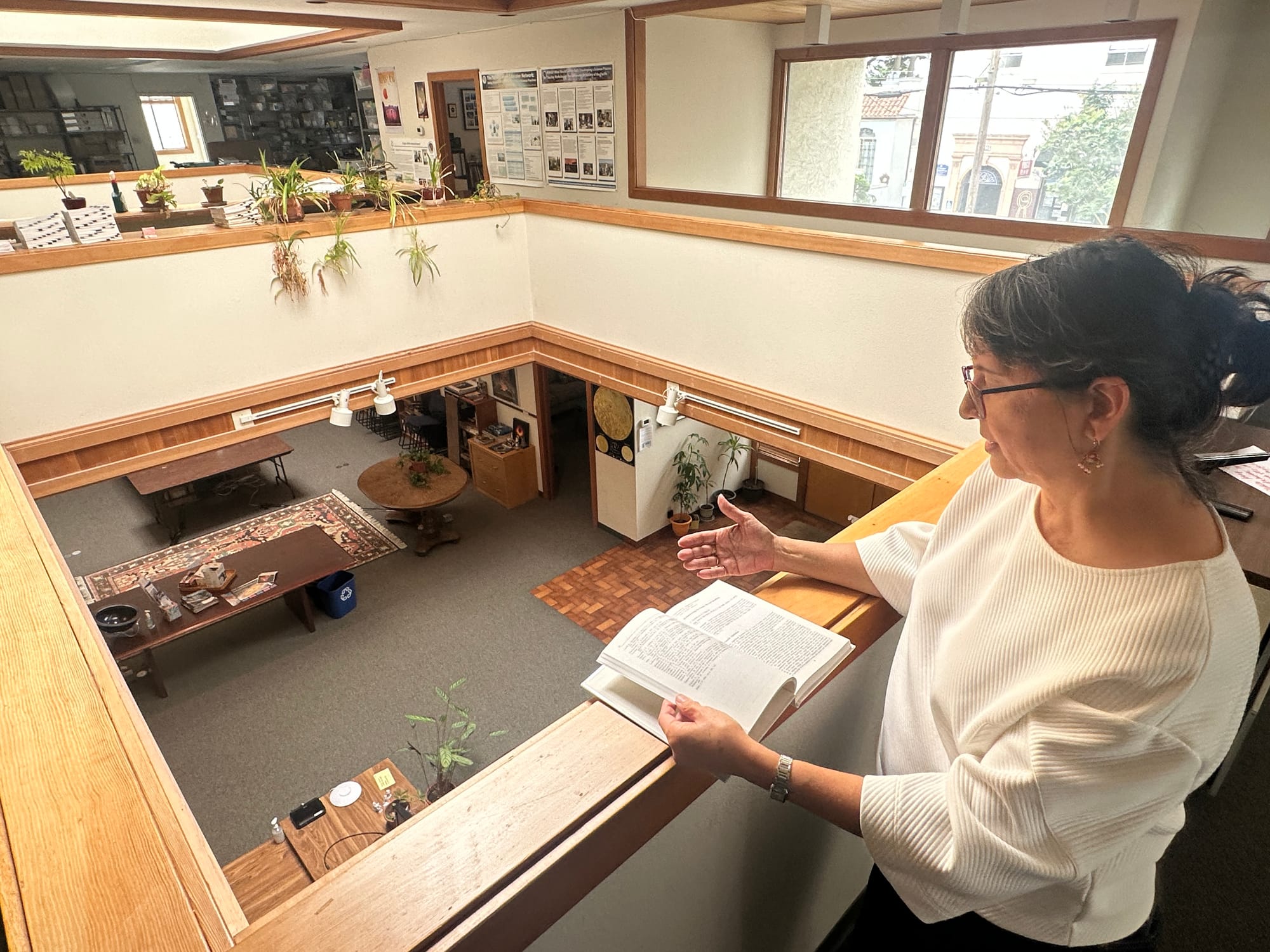
“The history in the building is great,” said Chris Ford, the society’s chief operating officer. “It's part of what we are, but we don't want it to define us. We want to continue to be a forward-looking organization.”
Founded in San Francisco in 1889 as an amateur astronomy research group, the society has evolved into an organization that supports astronomy education and science literacy worldwide.
It’s had many offices over the years. After spending the ‘60s in Golden Gate Park’s California Academy of Sciences, the society moved around the peninsula until settling in Ingleside in 1988.
Built in 1932, the building was a grocery store until the early ‘70s when it was converted into a branch of The Warehouse record store chain. When the society moved in in the spring of ‘88, it hummed with astronomy educators.
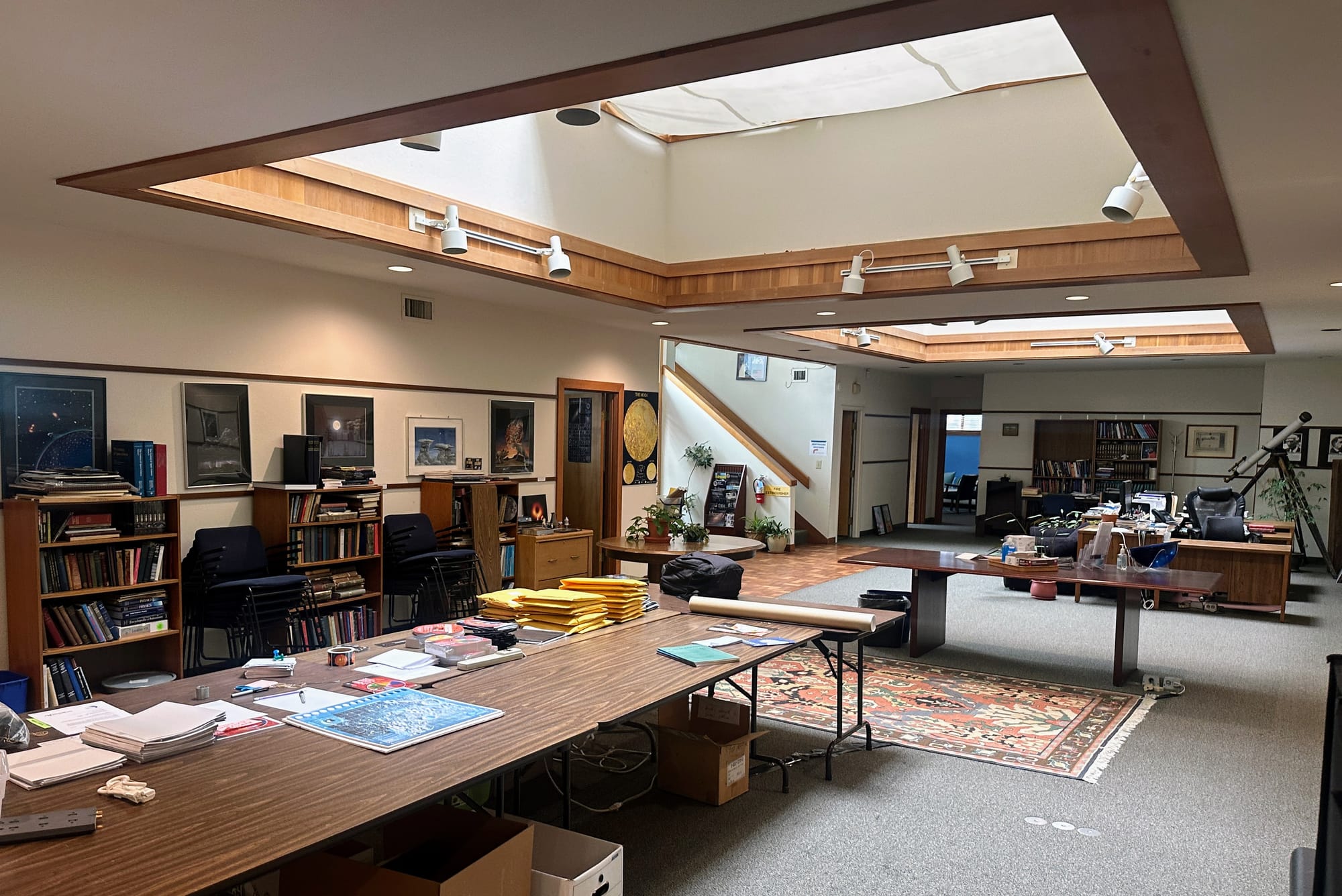
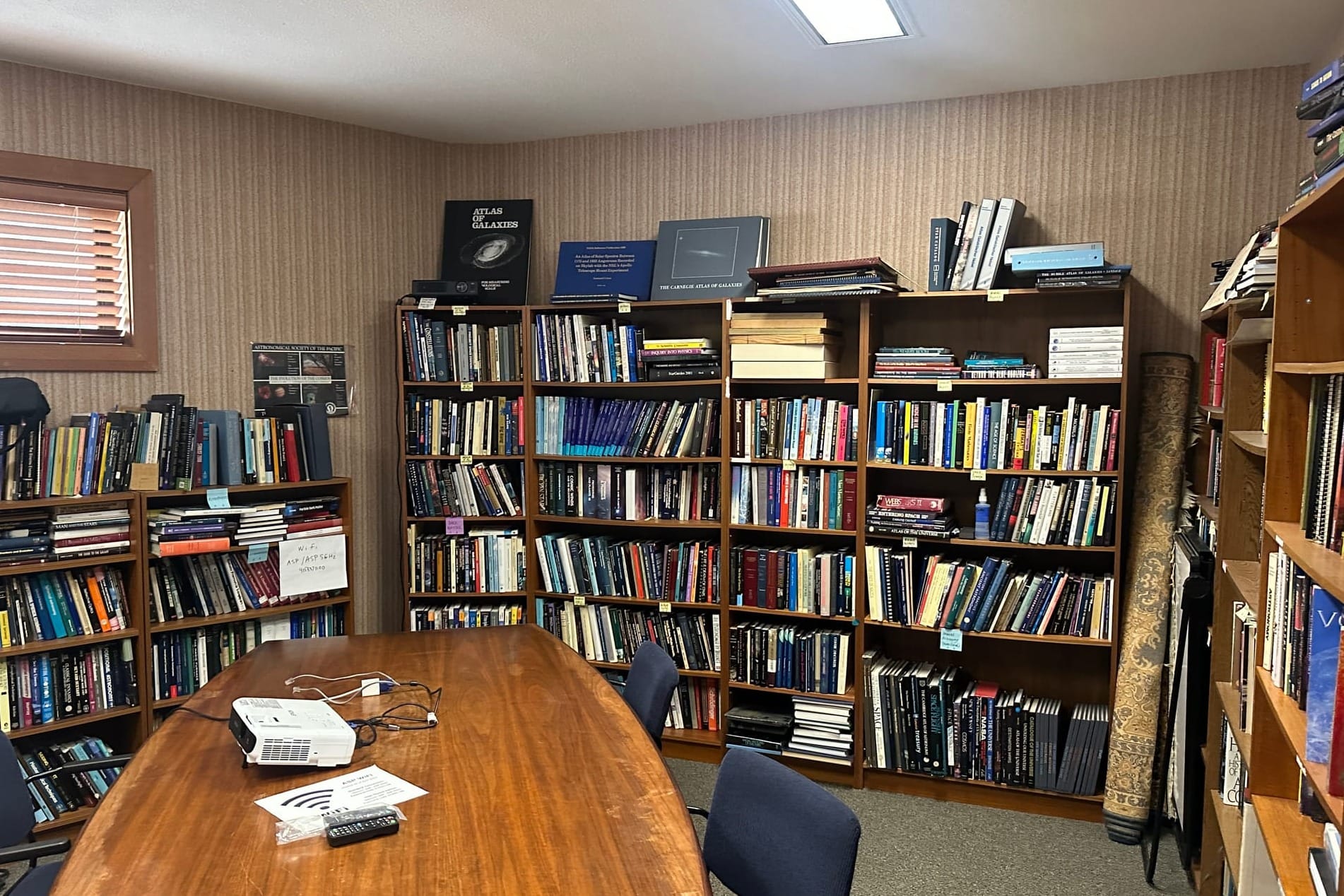
“We would have phone operators in here processing orders and shipping,” said Joycelin Craig, the society’s marketing and communications director. “That was the majority of the need for this space.”
A double-door entrance swings into the open floor plan. Huge skylights illuminate the now quiet offices. Original planetary paintings, once commissioned by the Morrison Planetarium, are framed and displayed across the walls.
Decades-old NASA posters hang inside offices and feature diagrams of the Voyager satellites and advertise exoplanet Kepler-16b as if it were a luxury resort. Each desk features a unique display of Legos, model spaceships and science education artifacts.
Telescopes and tripod stands crowd a back room. In one corner of the office, a Victorian-era stargazing instrument, as old as the organization itself, sits on wooden legs.
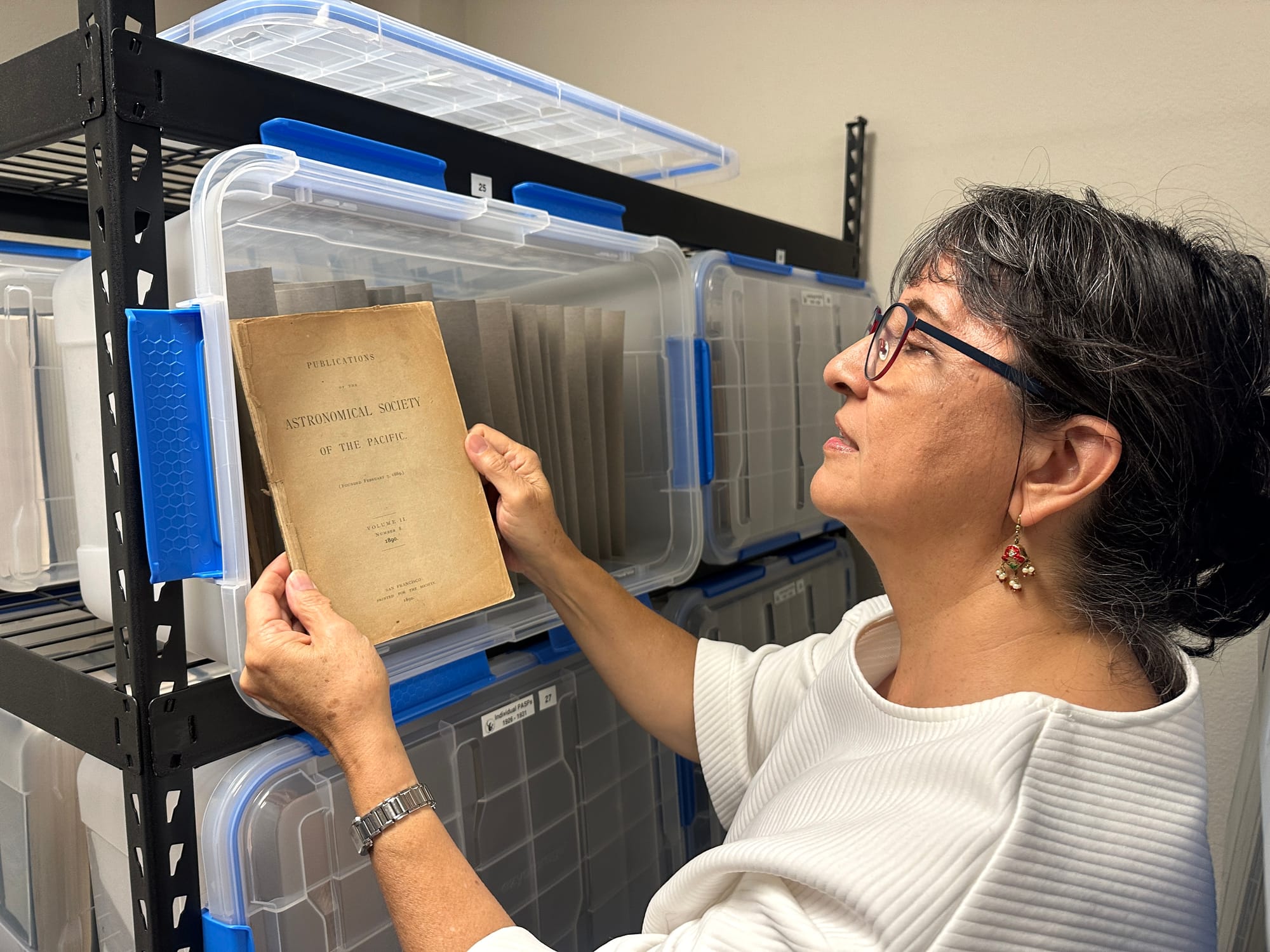
Despite the society’s work shifting to a virtual model, the archival room of print publications, dating back to the society’s founding, is too valuable to be discarded. On pause for renovations is Mercury Magazine, a project that moved to a fully digital format in 2023. No longer can they generate funding from print magazines and filling catalog orders of space-themed merchandise.
An extensive library, tucked away in one of the back rooms, is bursting with colorful glossaries and coffee-table-sized visual encyclopedias of the Milky Way Galaxy. The library was accumulated through donations. However, the donations slowed to a halt years ago, and many of the books, which still refer to Pluto as a planet, are increasingly dated.
Strewn across a central table were the pieces of resource kits for educators, a kind of goodie bag assembly station funded by NASA. Included in the kits were eclipse-viewing glasses, a focus that has been a major priority over the last decade, as the society organized its efforts for the two recent solar eclipses in North America.
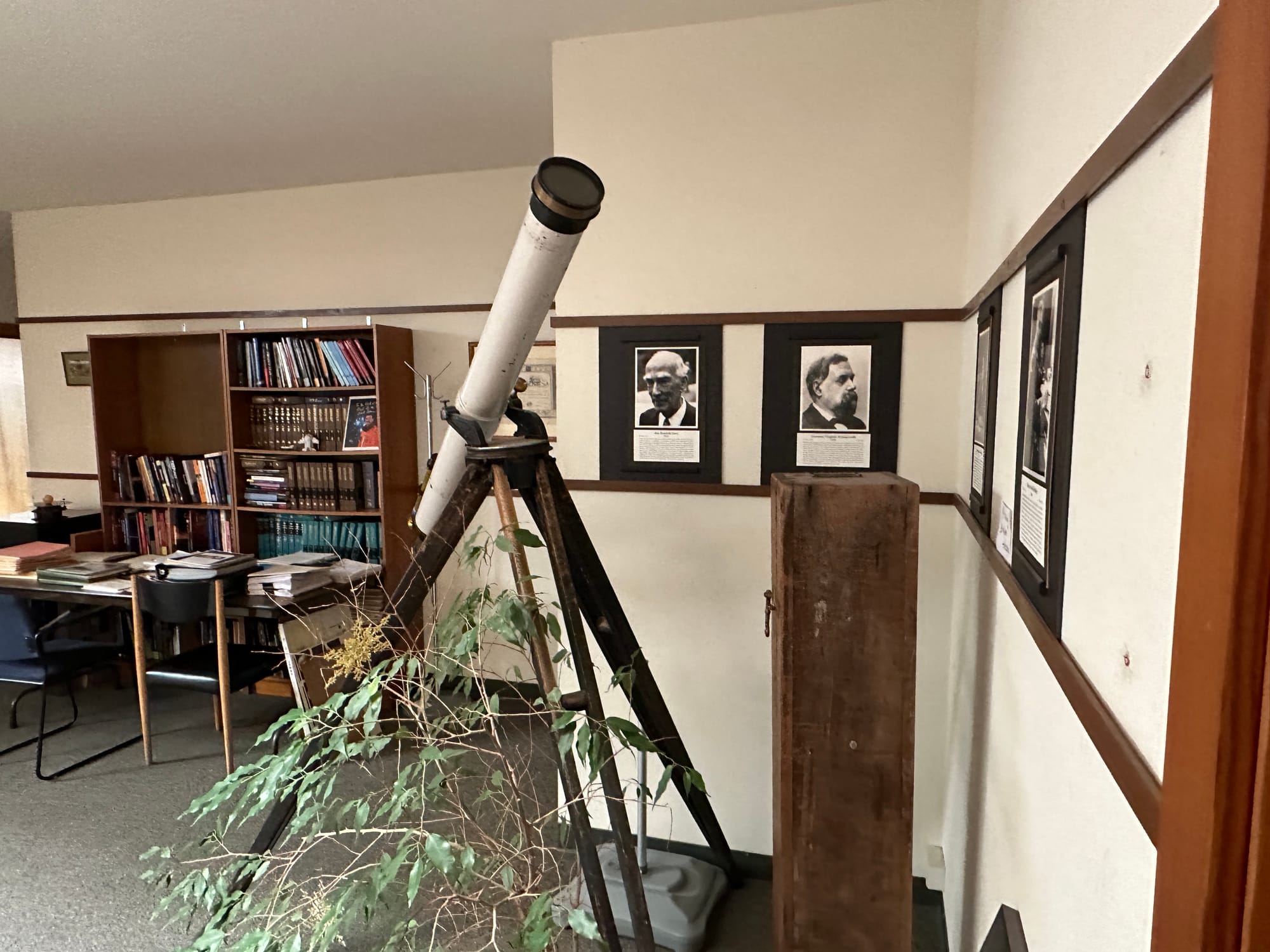
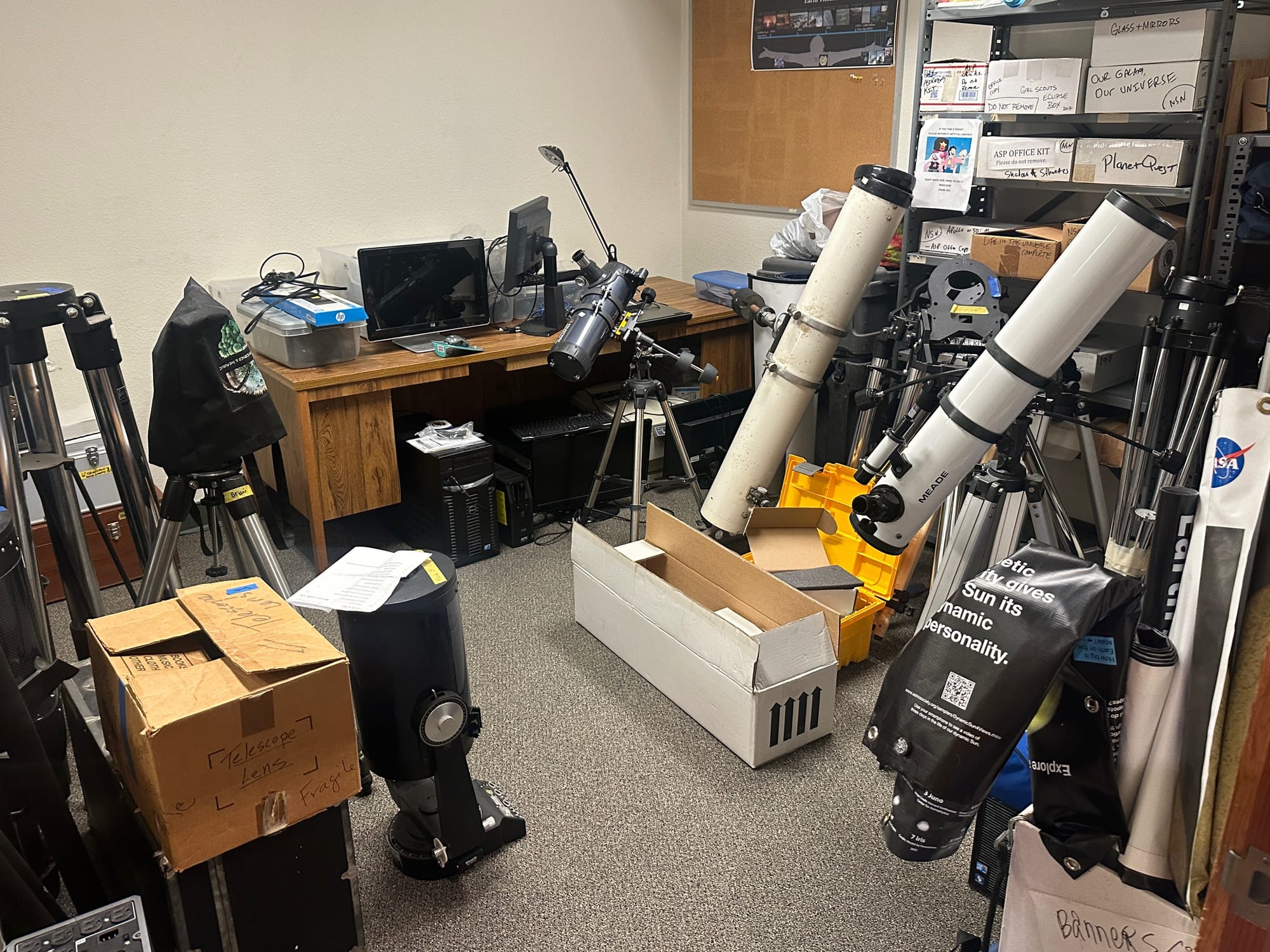
Upstairs is a considerable shipping department, a collection of packing materials that would be among the first to go in the move.
“That's something that today can easily be outsourced,” Ford said. “We're not in the business and competing with Amazon.”
While the online store still exists, the society intends to spend the next year revamping its website.
One second-floor wing is dedicated to a maker space. Crates of art supplies and foam spheres stack as high as the ceiling, allowing staff to draft kit ideas for production or create tactile presentations for science fairs. However, the society stopped orchestrating in-person events years ago.
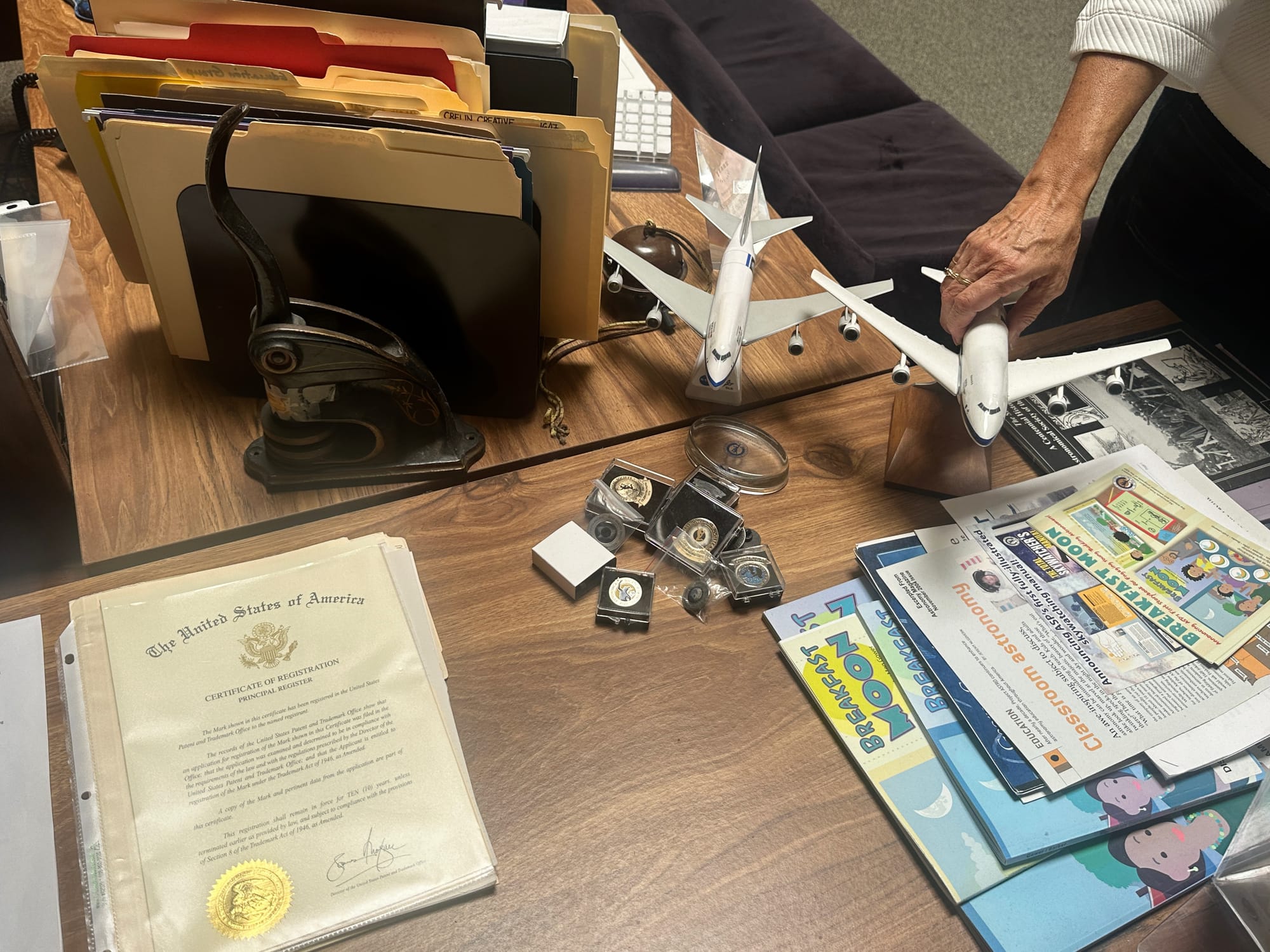
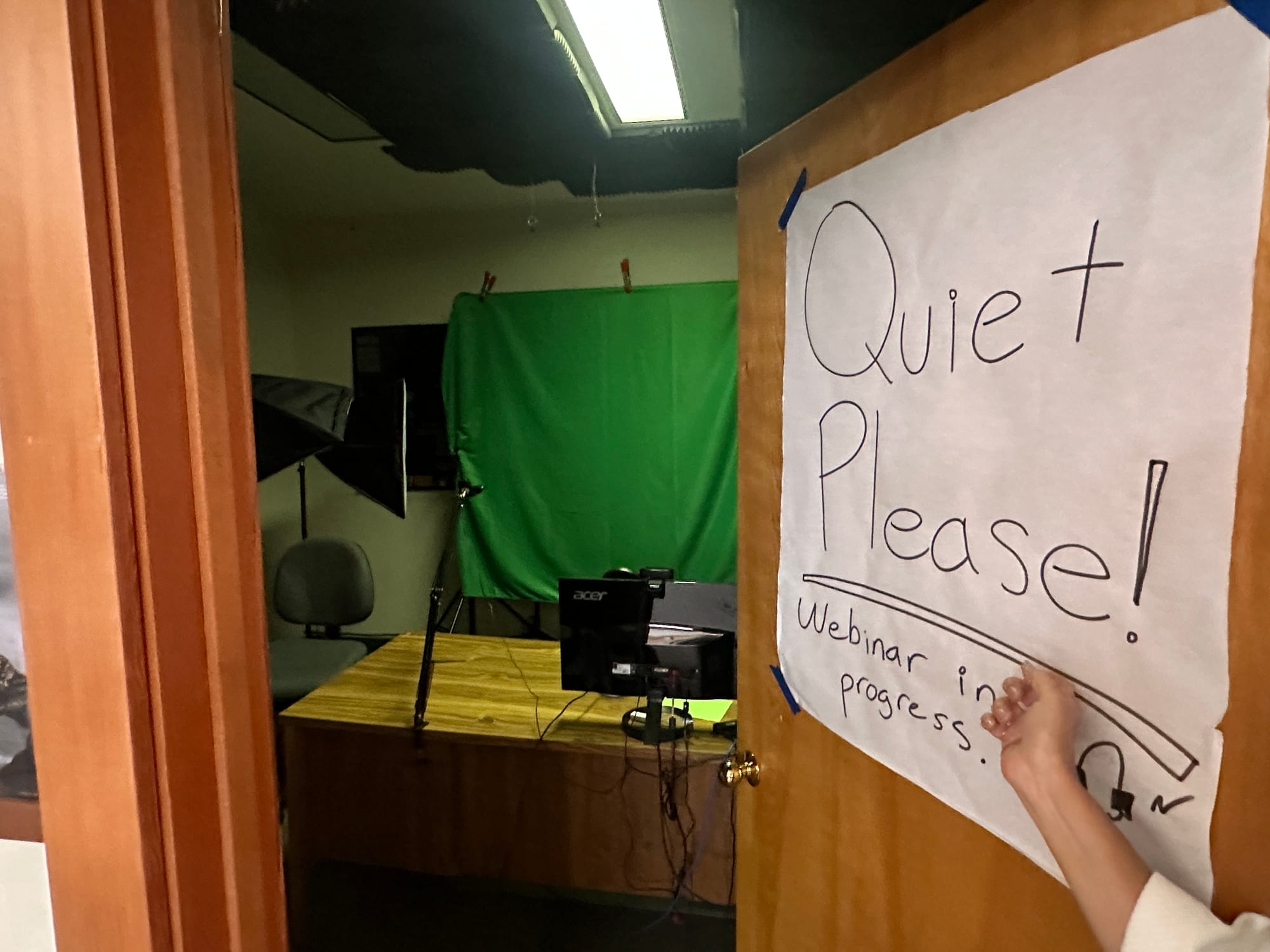
Shelves store the remains of their catalog merchandise, ranging from T-shirts to guided tours of the night sky on cassette tapes. On another wall sit stacks of books that collect research papers produced during the society’s computational astrophysics conferences.
In the garage is another floor-ceiling storehouse of odd magazines, science posters and one-off board games waiting to be offloaded.
In the basement are more boxes of paper trails reaching back into the analog age. The dust-covered Trinitron monitor and the mess of telecom wires still hanging from the wall are fossils of the 90s-era office life.
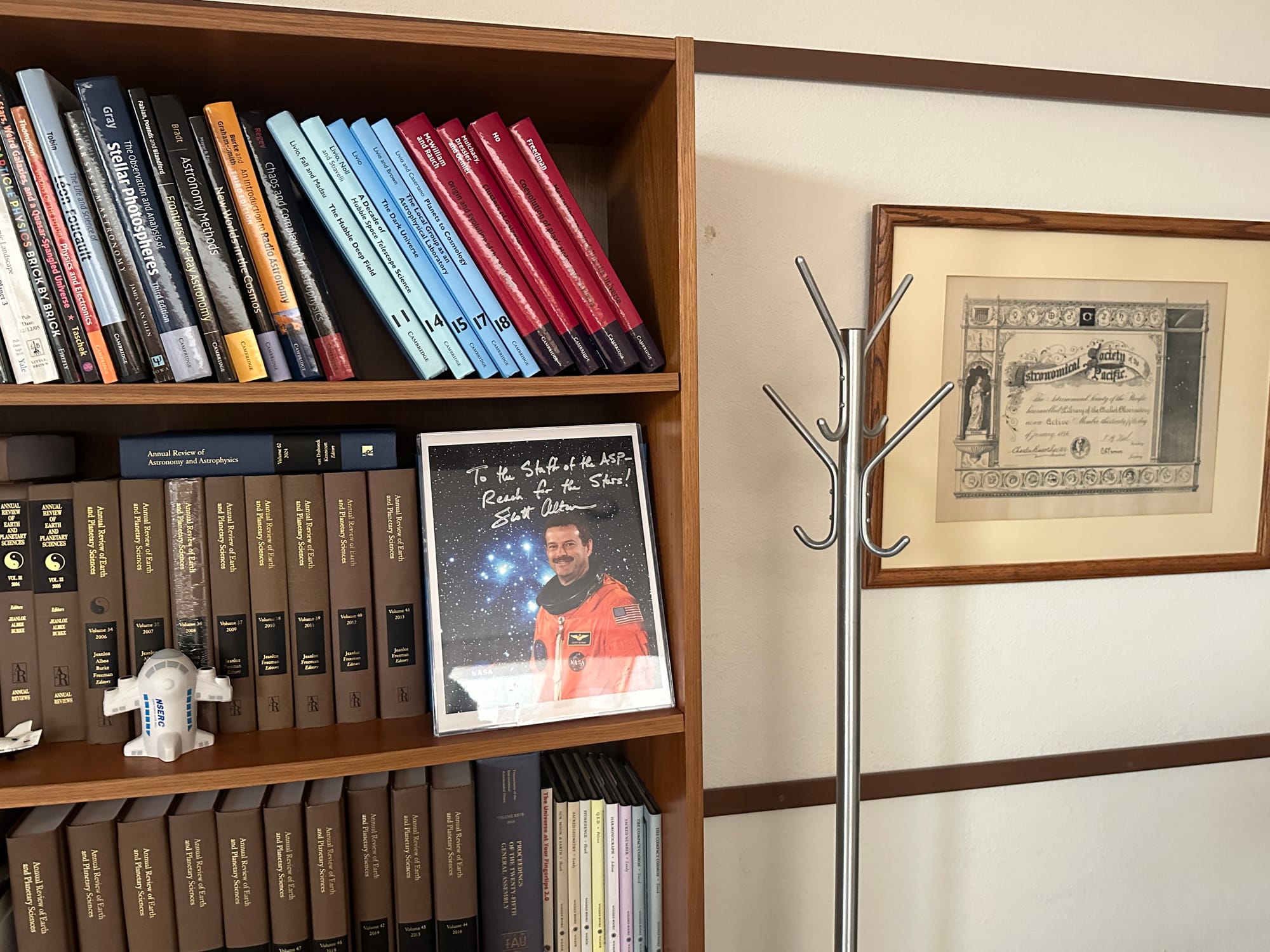
Ford recalled when he found a book propping up a desk that was more than a hundred years old.
“You never know what you pick up there; it might actually have a lot of historic value,” he said.
While the society won’t be offloading all its treasures, the equity tied up in the building is now seen as a potential runway for future programs.
“Looking back at the history of the society, there were these four or five major inflection points where the media and the social landscape we exist in had changed,” Ford said. “We've always adapted, and we're going through one of those periods of change now.”
We deliver neighborhood news, events and more every Thursday.